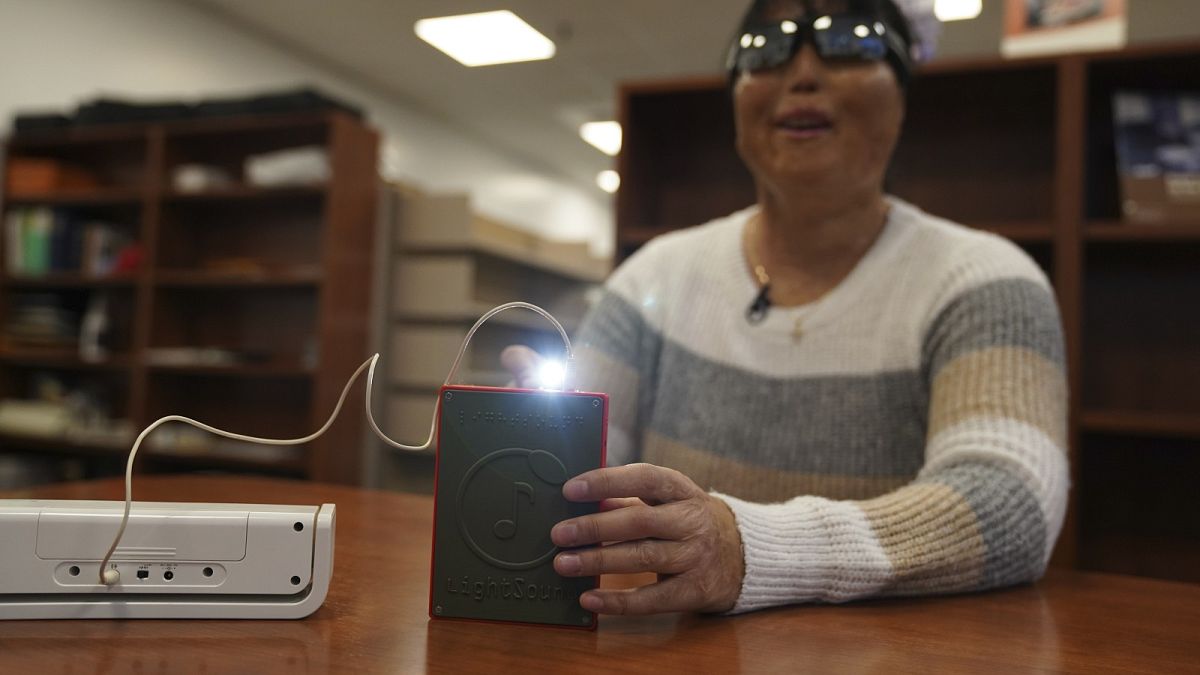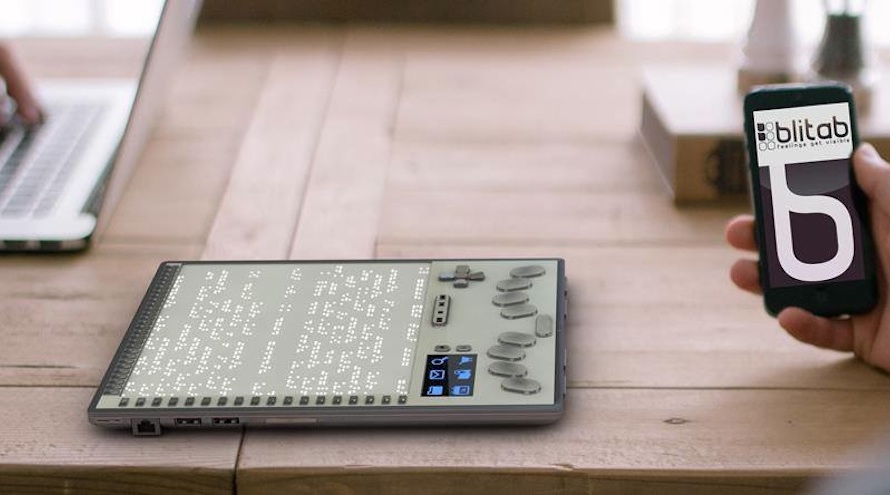Smart Glasses for the Visually Impaired: Breakthroughs in Vision Support
Smart Glasses for the Visually Impaired: Breakthroughs in Vision Support
Blog Article
Discover Cutting-edge Tools Made for the Visually Damaged
The development of cutting-edge tools for the visually damaged represents a substantial innovation in ease of access and independence. Technologies such as wise glasses with AI abilities and mobile applications designed to offer acoustic descriptions are improving everyday experiences for users.
Smart Glasses for Navigation

Smart glasses developed for navigation are reinventing the way aesthetically damaged people connect with their atmosphere. These innovative gadgets utilize a mix of electronic camera innovation, synthetic knowledge, and acoustic comments to give real-time info regarding environments. By utilizing obstacle discovery systems, smart glasses can signal individuals to prospective risks, enabling much safer mobility in both familiar and strange setups.
The integration of GPS technology even more boosts navigation capabilities, allowing users to receive auditory instructions as they move. This hands-free technique not only promotes self-reliance however likewise empowers visually impaired people to browse metropolitan landscapes with increased confidence. Furthermore, numerous smart glasses are geared up with functions that identify spots and street signs, supplying contextual details that enhances the user experience.
Additionally, the development of these gadgets is continuously advancing, with business working to improve the accuracy of object recognition and increase the series of navigational attributes. As wise glasses end up being a lot more easily accessible and economical, they hold the potential to substantially change life for aesthetically damaged users. Ultimately, these ingenious devices represent a vital action towards inclusivity, offering improved flexibility and a better feeling of autonomy for individuals navigating the world around them.

Mobile Apps for Daily Living
Exactly how can mobile applications boost the every day lives of visually damaged people? Mobile applications are revolutionizing the means aesthetically damaged users browse their environments, take care of daily tasks, and gain access to info. These applications supply essential assistance with numerous functionalities, fostering freedom and improving lifestyle.
Numerous cutting-edge mobile apps are made particularly for daily living. Applications like Be My Eyes attach visually impaired individuals with sighted volunteers via video phone calls, allowing them to get real-time assistance with tasks such as checking out labels or navigating unfamiliar rooms. Seeing AI, established by Microsoft, uses man-made intelligence to define surroundings, reviewed message, and identify objects, efficiently transforming a smart device into an effective device for day-to-day support.
In addition, navigating applications tailored for the visually impaired, such as Aira and BlindSquare, offer audio-based directions and ecological details, making it possible for individuals to traverse their surroundings securely and confidently. Past navigation and instant help, mobile apps likewise sustain organization and job monitoring, with features that help customers establish tips, create order of business, and track appointments. In summary, mobile applications serve as crucial sources, equipping aesthetically impaired individuals to lead even more independent and fulfilling lives.
Wearable Technologies for Help
Empowerment with modern technology is increasingly obvious in the world of wearable tools created to assist aesthetically impaired people. These innovative tools incorporate effortlessly right into day-to-day live, enhancing navigation and providing vital comments to customers. For example, smart glasses outfitted with cameras can recognize faces and review text out loud, enabling individuals to communicate even more confidently in professional and social settings.
Another notable development is making use of haptic responses systems in wearable tools. These systems utilize resonances or various other responsive signals to share details regarding the individual's atmosphere, such as barriers or adjustments in terrain, enhancing movement and security. Wearable innovations likewise include wristbands that attach to mobile phones, informing individuals to notices browse around this site with subtle resonances, therefore enhancing connectivity without dependence on visual signs.
As these innovations continue to evolve, they are not only improving independence for aesthetically damaged individuals yet likewise cultivating a greater sense of addition in society. By bridging the space between obstacles dealt with in everyday living and the capacity for autonomy, wearable modern technologies serve as critical tools in the mission for equal rights and empowerment for those with aesthetic problems.
Audio Summary Tools
Sound summary tools play an important function in boosting ease of access for visually damaged individuals, providing them with the capacity to involve with aesthetic media. Mobility aids for visually impaired users. These devices provide narrated descriptions of essential aesthetic components in movies, tv shows, and live performances, guaranteeing that customers can totally comprehend the context and feelings shared with visuals
Sound summary can be incorporated right into numerous systems, including streaming solutions, movie theater screenings, and live cinema. Many popular streaming services now include audio description as an availability function, enabling visitors to pick it quickly. Along with conventional media, specialized applications additionally exist, supplying audio descriptions for art exhibits, galleries, and various other social events.
The effectiveness of audio description depends upon the skill of the storytellers, that have to share visual information succinctly without diminishing the initial sound. Innovations in this area are likewise leading the way for more customized experiences, where customers can readjust the degree of detail and pacing according to their preferences.
Braille Innovations and Gadgets
Braille developments and tools have substantially transformed the way aesthetically impaired people connect with text and details. Modern developments have clear aviator glasses led to the development of versatile devices that enhance proficiency and independence among individuals.
Moreover, mobile Braille notetakers combine typical Braille input with modern-day capabilities, helping with note-taking, scheduling, and document modifying on the move. Braille displays and notetakers. These small tools commonly include text-to-speech abilities, connecting the void in between Braille and auditory details
In addition, innovative Braille printers have arised, permitting individuals to create Braille tags, records, and instructional materials effectively. This access fosters better participation in expert and educational atmospheres, inevitably promoting inclusivity.
Additionally, study into smart Braille modern technologies continues to expand. Devices that incorporate artificial intelligence are being explored to provide real-time navigating support and contextual information, improving the individual experience in diverse setups. In general, these developments show a commitment to empowering aesthetically impaired individuals via innovation, guaranteeing they can quickly access and involve with the world around them.

Conclusion
The innovation of ingenious devices for the aesthetically impaired significantly improves freedom and high quality of life. These modern technologies not just foster greater inclusion but likewise promote freedom in daily activities, inevitably contributing to a much more equitable and obtainable culture for aesthetically damaged people.
As smart glasses end up being more accessible and inexpensive, they hold the possible to dramatically transform everyday life for aesthetically damaged individuals. Mobile apps are revolutionizing the means aesthetically impaired customers navigate their settings, take care of day-to-day tasks, and go access details. Apps like Be My Eyes attach aesthetically damaged customers with sighted volunteers through video phone calls, permitting them to receive real-time assistance with tasks such as reading tags or navigating strange rooms.Additionally, navigating apps tailored for the aesthetically damaged, such as Aira and BlindSquare, use audio-based instructions and environmental information, allowing individuals to traverse their surroundings safely and confidently.The improvement of ingenious devices for the aesthetically damaged considerably enhances independence and top quality of life.
Report this page